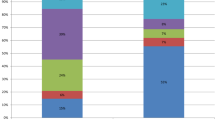Abstract
Background
Quadcopters are employed in diverse civil applications, ranging from monitoring airports and disaster management to serving as public address systems for announcing government directives, aiding in infrastructure monitoring for resilience, and facilitating real-time automobile detection, among others. Nevertheless, the utilization of quadcopters and hexacopters for delivering health assistance to remote and intriguing grounds has garnered comparatively less attention and research worldwide.
Aim
This paper presents the basics of quadcopter machinery in delivering medications and highlights its benefits for concerned patients who previously struggled to access life-saving medications due to challenging road infrastructure. The efficiency of quadcopters in terms of various parameters for delivering crucial medical supplies is significantly pronounced, particularly in the Almora District of Uttarakhand State, where many villages do not have roads to various villages.
Methods
A comprehensive analysis of the road infrastructure in the mountainous terrain of the Himalayas in India was conducted to understand the situation of individuals who are denied of access to life-saving medications because of the lack of nearby roads.
Results
The findings indicate that the widespread use of quad/hexacopters can offer a ray of optimism to people living in distant areas.
Conclusion
The quadcopter can provide basic facilities of medicines by dropping them at their doorsteps in the remote places of Almora, not accessed by Uttarakhand, thereby providing hope of living to the people.



Similar content being viewed by others
References
Garg PK (2021) Introduction to unmanned aerial vehicles, New Age India International Pvt Ltd, Delhi
Adamopoulos E, Rinaudo F (2020) “UAS-based archaeological remote sensing: review”, meta-analysis and state-of-the-art. Drones 4(3):46
Sriperumbuduru S, Sirisha V (2021) COVID-19 pandemic: a new era in higher education. J Use AI Robot Modern Tools Fight COVID-19
Bordini RH, Fisher M, Wooldridge M, Visser W (2004) Model checking rational agents. IEEE Intell Syst 19(5):46–52
Hill AC, Laugier EJ, Casana J (2020) Archaeological remote sensing using multi-temporal, drone-acquired thermal and near-infrared (NIR) imagery: a case study at the Enfield Shaker Village. New Hampshire Remote Sens 12(4):690
Grifn GF (2014) The use of unmanned aerial vehicles for disaster management. Geomatica 68(4):265–281
Erdelj M, Natalizio E, Chowdhury KR, Akyildiz IF (2017) Help from the sky: leveraging UAVs for disaster management. IEEE Pervasive Comput 16(1):24–32
Pandey S, Barik RK, Gupta S, Arthi R (2021) Pandemic drone with thermal imaging and crowd monitoring system (DRISHYA). Technical Advancements of Machine Learning in Healthcare, Studies in Computers, vol 936. Springer, Singapore
Homola J, Johnson M, Kopardekar P et al (2018) UTM and D-NET: NASA and JAXA’s collaborative research on integrating small UAS with disaster response eforts, Atlanta, GA, USA
Velan SS (2019) Introducing artificial intelligence agents to the empirical measurement of design properties for aspect-oriented software development. Amity Int Conf Artif Intell (AICAI)
Milas AS, Cracknell AP, Warner TA (2018) Drones – the third-generation source of remote sensing data. Int J Remote Sens 39(21):7125–7137
Vohra DS, Garg PK, Ghosh SK (2022) Problems and prospects of fying rotor drones particularly quadcopters. Türkiye İnsansız Hava Araçları Dergisi 4(1):01–07
Vohra DS, Garg PK, Ghosh SK (2022) Usage of UAVs/drones based on their categorization: a review. J Aerosp Sci Technol 74(2):90–101
Zare M, Abbaspour A, Fotuhi-Firuzabad M, Moeini-Aghtaie M (2017) Increasing the resilience of distribution systems against hurricane by optimal switch placement. Proc Conf Electr Power Distrib Netw Conf (EPDC’ 17)
Shishkov B, Hristozov S, Verbraeck A (2020) Improving resilience for effective monitoring after disruptive events. Proceedings of the 9th International Conference on Telecommunications and Remote Sensing, (ICTRS, 2020). Assoc Comput Machine. NY, USA, New York
Tarchi D, Vespe M, Gioia C et al (2017) Low-cost mini Radar: Design Prototyping and Tests detection and ranging: design prototyping and tests. J Sens 2017:15. https://doi.org/10.1155/2017/8029364
Author information
Authors and Affiliations
Contributions
Equal contribution by all authors.
Corresponding author
Ethics declarations
Ethics approval
No findings have been made, which could harm any periodical’s trust, methodical authorship’s effectiveness, and finally, the entire systematic enterprise. The reliability of the study was retained, and effective controlled scientific rules were adhered to while writing this research article.
Consent to participate
Not applicable.
Consent for publication
Not applicable.
Competing interests
The authors declare no competing interests.
Additional information
Publisher's Note
Springer Nature remains neutral with regard to jurisdictional claims in published maps and institutional affiliations.
Rights and permissions
Springer Nature or its licensor (e.g. a society or other partner) holds exclusive rights to this article under a publishing agreement with the author(s) or other rightsholder(s); author self-archiving of the accepted manuscript version of this article is solely governed by the terms of such publishing agreement and applicable law.
About this article
Cite this article
Vohra, D.S. Exploring the role of quadcopter technology in enhancing healthcare access in remote Himalayan Regions: a case study of Almora, Uttarakhand. Ir J Med Sci (2024). https://doi.org/10.1007/s11845-024-03646-0
Received:
Accepted:
Published:
DOI: https://doi.org/10.1007/s11845-024-03646-0




